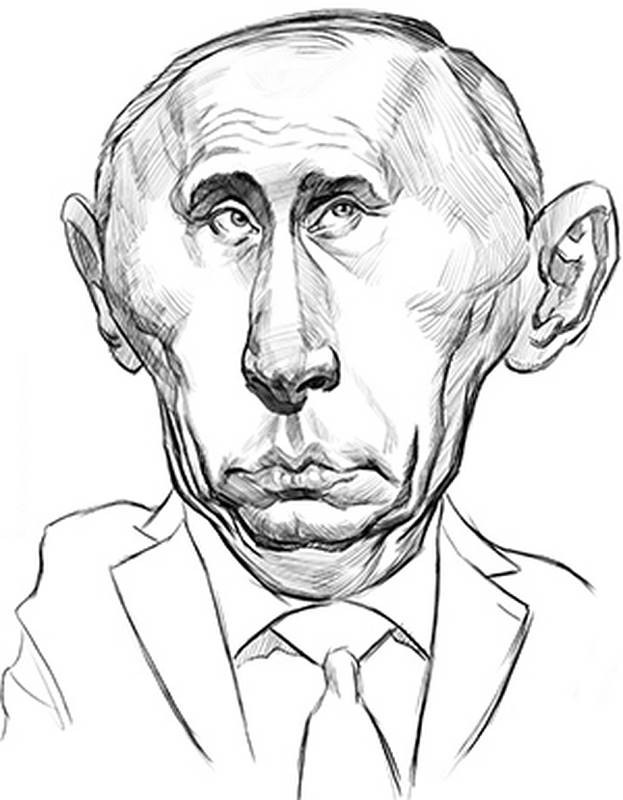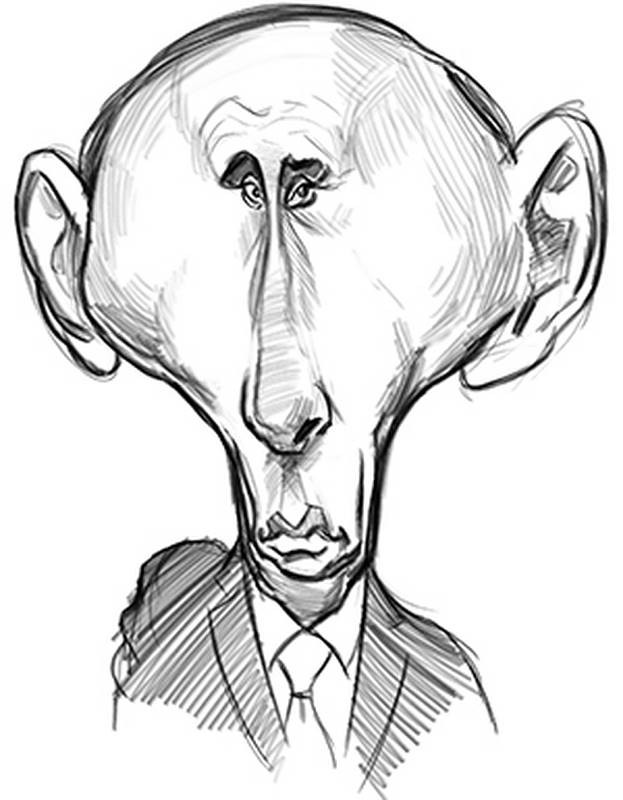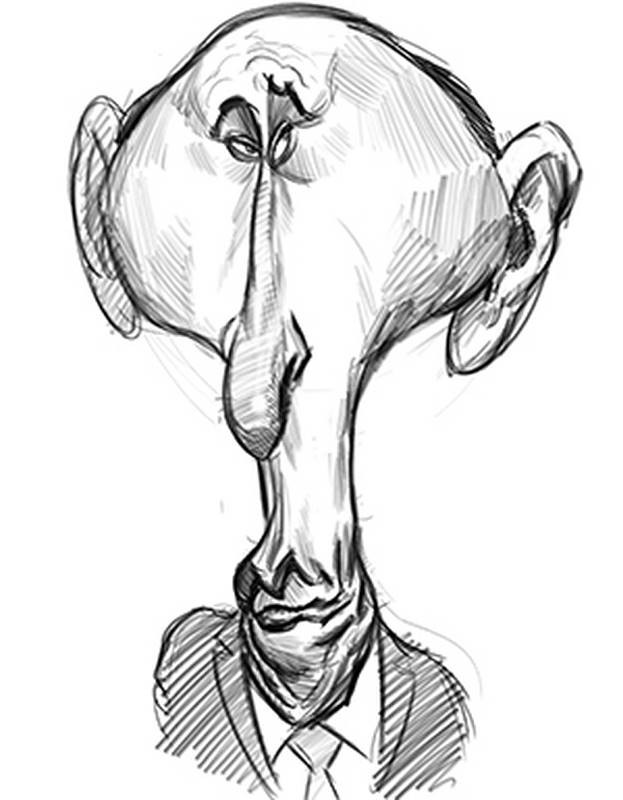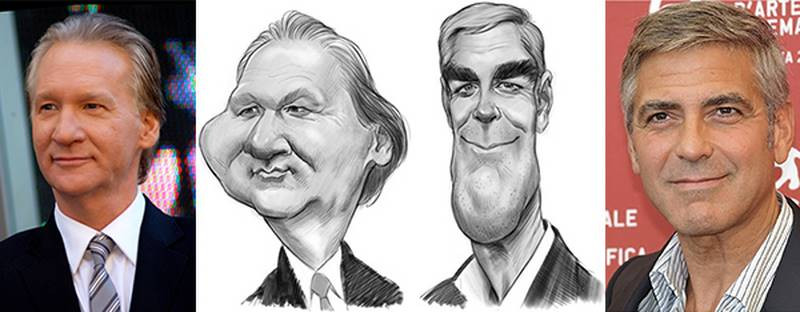Caricature of a Caricature
Today, we're going to learn to do caricatures to the third power.
One of the most fun and effective techniques to push my caricatures skills that I ever learned was to make a caricature of a caricature I had just drawn. And then a caricature of THAT caricature.
[slideshow]


The idea is really simple. Take a caricature you’ve drawn and exaggerate the traits you already exaggerated. Features that are big get bigger, things that are small get smaller, things that are far apart or close together…well, you get the idea. Once you’ve done a caricature of your caricature, use that second caricature to make a third even more extreme caricature. See how far you can take it and still hold onto the likeness.
If you find that you can get a decent likeness in a caricature, but would like to do stronger exaggerations, this is the exercise for you.
Let's Go!
The procedure for doing a triple caricature is pretty straightforward. First, choose a successful caricature sketch you’ve already drawn from a previous lesson. In this case, I’m using my Vladimir Putin caricature from the Lesson 5 Premium Videos. Whatever sketch you choose, make sure you’re really happy with the likeness you achieved with it. Because if you exaggerate the traits of a caricature with a poor likeness, you will only reinforce that poor likeness. You can do a new original caricature for this exercise, of course. But if you want to jump right in to this lesson, and you want to see how you can improve upon an earlier endeavor, just use something that you already created.

Remember, try to use just the first caricature as your guide. Try not to look at the original reference photo too much. You don’t want to base your decisions off the original photo because you might be tempted to go in a different direction with the exaggeration choices and then miss the likeness. With this exercise, you’re trying to learn how to improve an existing caricature and make it more extreme.
Your instructions here are simple. Wherever a shape in your original caricature deviates from the average head, make those exaggerations even stronger.
In the case of my original Putin drawing, I gave him a head the shape of a light bulb. Large at the top and narrow at the bottom. So those proportions were the first things I exaggerated in this second caricature. In caricature 1, I lengthened his nose and pushed his eyes up high on his head. I also drew his eyes close together and at a slant. One eye being slightly more slanted than the other. So those characteristics get pushed even farther in this new sketch. Also, his lips become more curved with more extreme peaks. And since his facial features appear small in relation to his head in the first caricature, that relationship becomes more extreme in this second one.
This new caricature is actually pretty successful. The likeness is still there, and the exaggerations are more extreme. But now let’s see if I can take it further and do a caricature of this caricature.

The first thing I do in this third caricature is design a more exaggerated head. His head now looks more like a the shape of a tree with a skinny trunk than a light bulb. The second sketch amplified the difference between large cranium and the narrow lower face. So that relationship is what becomes more extreme in this sketch. The second sketch also pushed the eyes up higher, lengthened the nose and pushed the eyes closer together with a more extreme slant. So this third sketch amplifies those exaggerations as well.
The nose in this sketch has become longer at the tip, dangling down over his face. And the curvy pursed lips of sketch 2 have now become so pursed, that they are projecting off the front of his face off to the side. And the chin almost disappears completely amidst the rolls of sagging neck flesh that drapes loosely over his shirt collar.
At this point, I’m moving out of the realm of realism and venturing a bit into a cartoony or even abstract mode of drawing. Normally, I like to keep my caricatures very grounded in reality with more or less anatomically correct exaggerations. Because when I paint them, I like to have realistic indications of the forms and anatomy. But extreme exaggerations require that I push the boundaries of my own comfort level. So there is a trade off when doing these kinds of caricatures.

When you try this exercise, you may find that you prefer this style. If you’re more like me, though, you may choose to stick with the exaggeration levels in the first or second sketches. But this exercise may still end up affecting your caricature work positively, giving you the confidence to know that you have the ability to push boundaries and come up with more fun and playful exaggerations whenever you like, or help you figure out how to find a happy medium between mild and wild exaggerations.
Premium Content
Purchase for the Premium Version of this caricature course at and get access to lots more additional lessons that go way more in depth than the free videos. In the premium videos for THIS lesson I demonstrate and discuss how I do triple caricatures of previous drawings from this course. When you get the premium videos, you help support our ability to make more of these lessons!
What's Next
The reality is that some people are harder to caricature than others. The next lesson will cover how to handle difficult or average faces. We’ll be drawing two faces simultaneously to help figure out how to use their opposing characteristics to make the exaggerations even stronger than they would be if we drew them alone.












